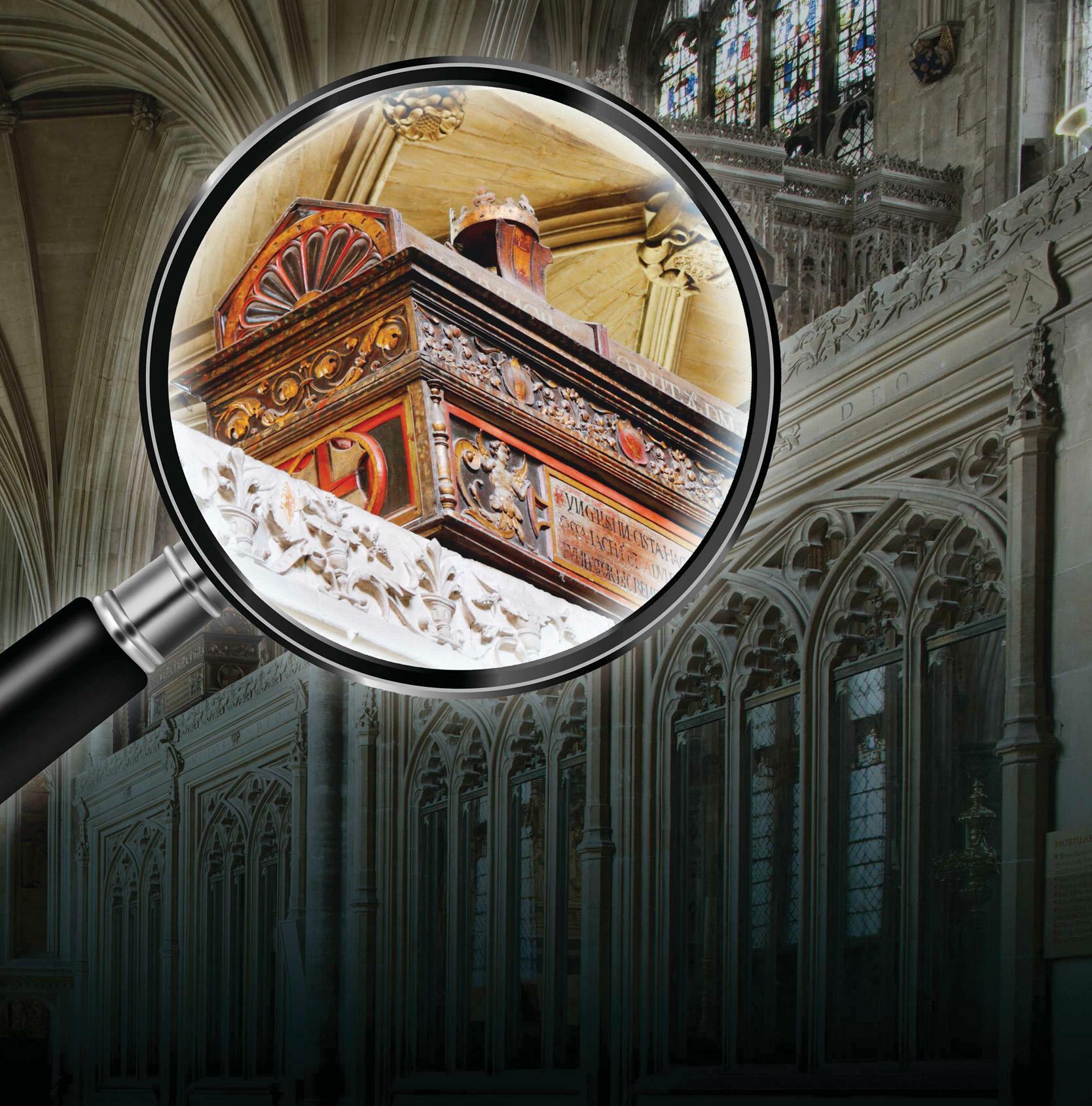
It’s the morning of 14 December 1642, and the city of Winchester is quiet. Inside the cathedral, the clergy are painfully aware of a looming threat outside. Two days earlier, parliamentarian soldiers had entered the city, snatching horses and looting the town.
In the midst of a civil war dividing the country into those who support the king and those who are for parliament, religious institutions are especially at risk, because power and religion lie at the heart of the conflict. So when, on that December morning, soldiers smash through the cathedral’s great west door, the clergy are appalled but not surprised. They watch in terror as the troops storm the nave with colours flying, drums beating and torches lit, some even riding on horseback.
Over the hours that follow, the building is desecrated. Eventually, the soldiers turn their attention to the tops of the finely carved stone screens that surround the central presbytery, the cathedral’s beating heart. There on a ledge sit 10 neatly spaced wooden chests, placed up high by Richard Fox, bishop of Winchester, in the 1520s. The remains of King Cnut and his wife Emma lie within the chests, as do those of Ecgberht and numerous other West Saxon kings, along with William II and various venerated bishops.
The troops climb up to the chests and rifle through them callously, smashing some on the cold stone tiles. Observers watch in shock as the soldiers pick up the bones and hurl them at the beautifully crafted stained-glass windows that adorn the cathedral. It is only hours later, recovering from their terror, that the clergy begin to pick through the detritus of the onslaught, attempting to return what remains to a safe place once again.
A tragic tale
This story is from the November 2023 edition of BBC History UK.
Start your 7-day Magzter GOLD free trial to access thousands of curated premium stories, and 9,000+ magazines and newspapers.
Already a subscriber ? Sign In
This story is from the November 2023 edition of BBC History UK.
Start your 7-day Magzter GOLD free trial to access thousands of curated premium stories, and 9,000+ magazines and newspapers.
Already a subscriber? Sign In
A modern icon
IVWWAN MORGAN lauds an insightful and clear-eyed examination of a leader blessed with charisma and quality but also marred by personal flaws

Shipwrecks on Scilly
Beneath the clear waters of the Isles of Scilly lurk treacherous rocks on which more than 1,000 ships have foundered. CLARE HARGREAVES discovers their stories

Medieval sambocade
ELEANOR BARNETT recreates an early cheesecake - a dish with surprisingly long roots stretching back well over two millennia

Greek drama
LLOYD LLEWELLYN-JONES is swept along by an engaging exploration of the Ptolemaic rulers of Egypt in the final centuries before Rome conquered this ancient land

Unravelling the enigma
JOSEPH ELLIS is impressed by a detailed, colourful and insightful biography of George Villiers, a Stuart royal favourite who made powerful enemies

The Elusive Pimpernel
Some suffragettes marched with banners, or printed and distributed propaganda pamphlets. Others took more direct action. DIANE ATKINSON tells the story of one activist who employed arson to spark awareness of the burning issue of women’s suffrage

A HILL TO DIE ON
In early 1944, the Allied advance in Italy was brought to a halt at a rocky outcrop called Monte Cassino. And at the heart of the bloodbath that followed, writes James Holland, was flawed leadership

How to build a radical
How to build a radical 6 8 The experiences that shaped Guy Fawkes and his gunpowder plot co-conspirators into violent extremists seem all too familiar today. Lucy Worsley tells a story of religious clashes, state-sanctioned torture and comrades-in-arms willing to die for the cause

WHO WAS GREATEST THE US PRESIDENT?
With Donald Trump set to be inaugurated as the 47th president, we asked seven historians to nominate their choice for the most accomplished American leader

Land of make believe?
Marco Polo's adventures in Asia earned him everlasting fame. But are his accounts of his travels essentially works of fiction? Peter Jackson asks if we can trust this medieval travel-writing superstar